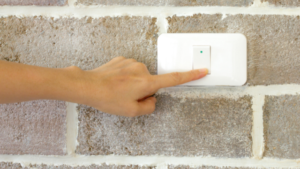COMMERCIAL BUILDING MAINTENANCE TIPS FOR THE FALL

During the fall season, the temperature gradually decreases, which means that winter is also coming.
Fall is the best time for building managers or property owners to think about routine maintenance for their commercial buildings to keep their tenants safe and to avoid costly repairs down the road.
This article will talk about commercial building maintenance tips that you can do in the fall.
Get an HVAC Inspection or a Tune-Up
Apart from changing the air filters every two to three months, it’s essential that you get a tune-up or a thorough inspection of your HVAC system at least a month before the cold weather sets in.
A licensed technician can diagnose and resolve a potential problem to keep your system running efficiently with a tune-up. This routine maintenance won’t only make your tenants comfortable, but it can also save you money in the long run.
Schedule a Roof Inspection
Keep in mind that the insurance company may not cover roof repairs or replacement, especially when the property owner failed to maintain the roof. Getting a roof inspection also helps you prevent costly problems such as water damage or other issues. Hire a licensed and insured roofer for the inspection to avoid accidents and to ensure a good job.
Check the Electrical Components 
To prevent electrical problems, ensure that you check all of the electronic appliances and their components. Make sure that they are in good condition. If you’re using seasonal heaters, turn them off when unused.
Check your smoke detectors and your backup generators to ensure that they will work. If possible, hire a licensed electrician to do all these. They can perform maintenance to the entire electrical system to avoid emergencies.
Check Your Plumbing
Hire a licensed plumber to check the entire system, especially those exposed pipes. You need to also inspect the faucets and the irrigation systems.
The pipes have to be well insulated to prepare for the colder weather because when the temperature reaches below zero, the water inside exposed pipes could freeze and may expand and burst. You don’t want any water damage to your commercial property because repairs may cost you a fortune.
Inspect the Gutters and Clean the Interior of the Building
Falling leaves could affect your gutter system, so make sure that they are clear to avoid problems. It’s also best for you to deep clean the interior of the building, especially since colder temperatures are coming. Disinfect the common areas to prevent flu and other illnesses.
Check the Foundation of the Building
The fall is also time to look for any visible cracks in the building’s foundation and ensure that you contact a professional if there are issues. Check the windows and doors, and if they’re working properly. Contact a professional if you need assistance.
DON’T IGNORE MINOR PROBLEMS
Remember, most emergencies don’t happen overnight. They happen because the property owners either failed to perform maintenance or ignored problems that need attention.
Always get in touch with a professional technician or contractor if you need help.
Reach out to ESP if you have any questions!









 Power down computers and other office equipment at the end of the day. If computers are not being used through the hours when your staff isn’t working, have your team be in the habit of shutting them down before they leave. Turning off and unplugging as many devices as possible at the end of the day is a simple way to cut back. This includes energy efficient coffee makers, toasters, and similar appliances.
Power down computers and other office equipment at the end of the day. If computers are not being used through the hours when your staff isn’t working, have your team be in the habit of shutting them down before they leave. Turning off and unplugging as many devices as possible at the end of the day is a simple way to cut back. This includes energy efficient coffee makers, toasters, and similar appliances.